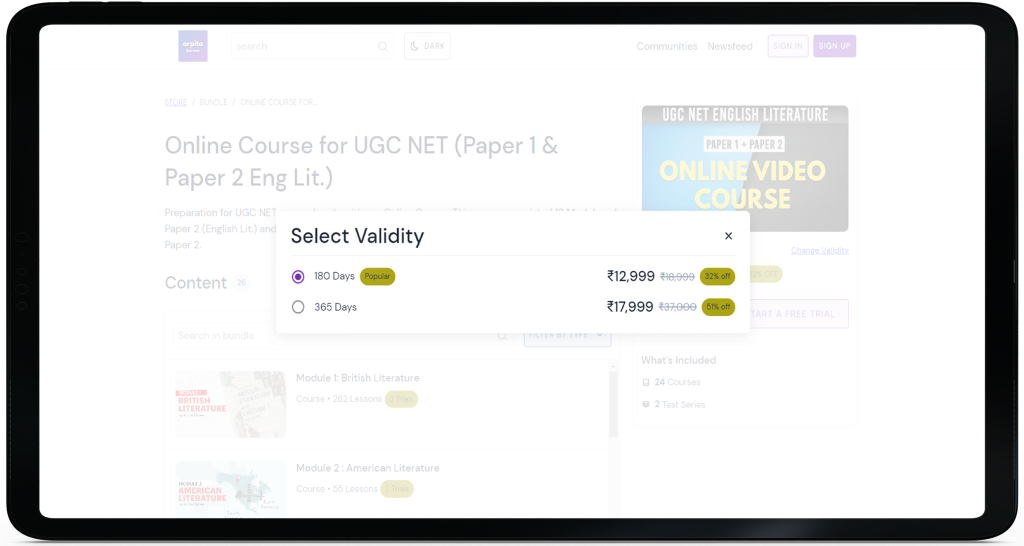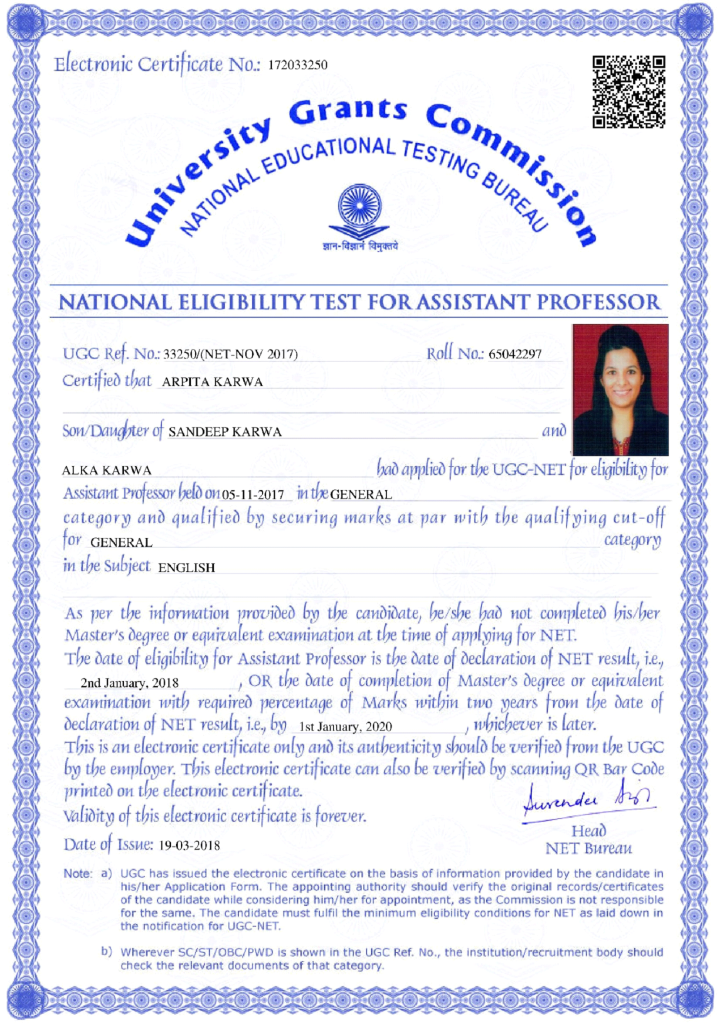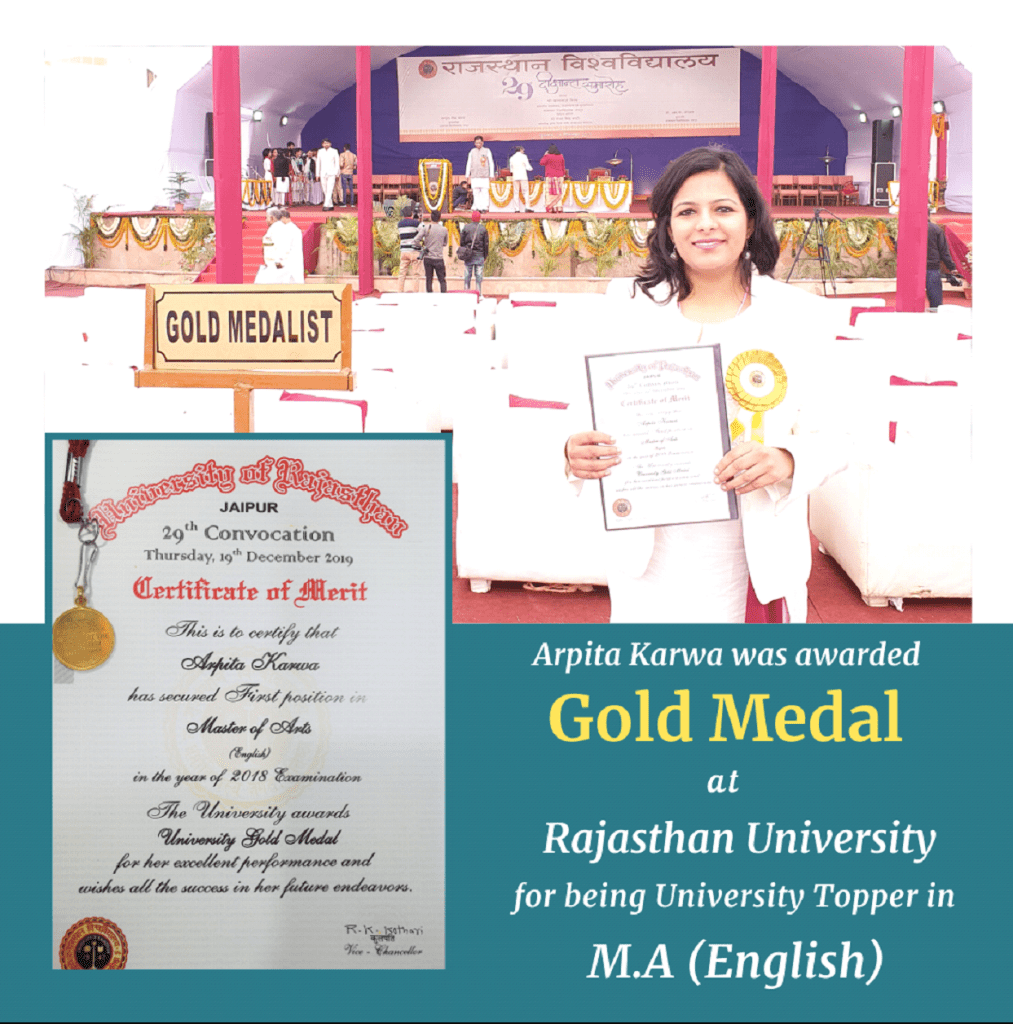Kerala Set 4 (2014)
June 20, 2023 2023-12-18 16:01Kerala Set 4 (2014)
Kerala Set 4 (2014)
Q.1) Who was Ben Jonson referring to when he said “he writes no language”?
(A) Lyly
(B) Shakespeare
(C) Chaucer
(D) Spenser
Q.2) Which work of Chaucer is an adaptation of 1 Filostrato’
(A) The Canterbury Tales
(B) Troilus and Criseyde
(C) The House of Fame
(D) The Legend of Good Women
Q.3) The White Devil is a play written by……
(A) Thomas Kyd
(B) Middleton
(C) Webster
(D) Tourneur
Q.4) ……… was written by Chaucer on the death of Blanche of Lancaster in 1368
(A) The House of Fame
(B) The Parliament of Fowls
(C) The Legend of Good Women
(D) The Book of the Duchess
Q.5) From where did the genre of the medieval comic tale called fabliau originate?
(A) Spain
(B) England
(C) France
(D) Ireland
Q.6) The Miller’s Tale describes the cuckolding of an Oxford carpenter by a clerk named…
(A) Alisoun
(B) Absolon
(C) Nicholas
(D) Reeve
Q.7) Identify the correct chronological sequence:
(A) Spenser-Chaucer-Wordsworth-Thomas Kyd
(B) Spenser-Wordsworth Tennyson – Auden
(C) Shakespeare-Spenser -Larkin -Mathew Arnold
(D) Shelley-Spenser-Tennyson – Eliot
Q.8) In The Canterbury Tales…… is a version of The Wedding of Sir Gawen and Dame, Rannell
(A) The Miller’s Tale
(B) The Wife of Bath’s Tale
(C) The Clerk’s Tale
(D) The Knight’s Tale
Q.9) Who said “Children sweeten labours, but they make misfortunes more bitter”?
(A) Addison
(B) Lamb
(C) Bacon
(D) Hobbes
Q.10) … appears as the knight of holiness in Book 1 of Spenser’s The Faerie Queen
(A) Redcrosse
(B) Orgoglio
(C) Una
(D) Archimago
Q.11) Hobbe’ s most famous work… was published in 1651
(A) Leviathan
(B) in Retreat
(C) Be hemoth
(D) The Golden Legend
Q.12) Bacon’s essays published in 1612 was subtitled ………
(A) Moral Meditations
(B) Counsels, Civil and Moral
(C) Religious Essays
(D) Counsels, Civil Essays
Q.13) which is the historical text written by Thomas More?
(A) The History of Henry 2
(B) The History of Richard 1
(C) The History of Henry 4
(D) The History of Richard 2
Q.14) The poem beginning “Death, be not proud” was written by …………
(A) John Keats
(B) John Donne
(C) Sylvia Plath
(D) Emily Dickinson
Q.15) ………… used the carpe diem mode in To His Coy Mistress
(A) Keats
(B) Vaughan
(C) Marvell
(D) Cowley
Q.16) ……was the first to apply the term metaphysics to 17* century poetry
(A) Dryden
(B) Donne
(C) Eliot
(D) Wordsworth
Q.17) in which play does the character Gaveston appear?
(A) Tempest
(B) The Midsummer Night’s Dream
(C) Edward II
(D) Tamburlaine the Great
Q.18) …………is considered the earliest archetypal morality play
(A) Everyman
(B) The Second Shepherd´s Play
(C) Discretion
(D) Good and Evil
Q.19) Who was the precursor to Chaucer’s device used in The Canterbury Tales where characters narrate stories?
(A) Francesco Petrarch
(B) Giovanni Boccaccio
(C) Baldassare Castiglione
(D) Dante Alighieri
Q.20) …… is the subtitle of Jonson’s play Epicoene
(A) Volpone
(B) Sejanus
(C) The Silent Woman
(D) Bartholomew Fair
Q.21) Which play of Shakespeare was inspired by the wreck of a ship on the Bermuda Island?
(A) Cymbeline
(B) The Two Gentlemen of Verona
(C) Titus Andronicus
(D) The Tempest
Q.22) The Comedy of Errors was written by………
(A) Ben Jonson
(B) Shakespeare
(C) Oscar Wilde
(D) Dryden
Q.23) In which critical work did Wilson Knight focus on the imagery and patterning in Shakespeare’ s tragedies?
(A) Shakespeare’s Imagery
(B) What Happens in Hamlet
(C) The Development of Shakespeare’s Imagery
(D) The Wheel of Fire
Q.24) ……… was one of the most beloved clowns in the Elizabethan Theatre
(A) Thomas Nash
(B) John Lyly
(C) Charles Boyce
(D) William Kempe
Q.25) ……… is the king of the fairies in A Midsummer Night’s Dream
(A) Theseus
(B) Oberon
(C) Titania
(D) Demetrius
Q.26) Emilia in Shakespeare’s Othello is killed by………
(A) Rodrigo
(B) Othello
(C) Cassio
(D) Iago
Q.27) Who proclaims a military funeral for Hamlet at the end of the play?
(A) Claudius
(B) Laertes
(C) Fortinbras
(D) Polonius
Q.28) In which play do you find this line “Nothing will come of nothing”?
(A) King Lear
(B) The Taming of the Shrew
(C) Macbeth
(D) Othello
Q.29) Which critical work credits Shakespeare with the “largest and most comprehensive sou/”?
(A) Biographia Literaria
(B) An Essay of Dramatic Poesy
(C) Characters of Shakespeare’s plays
(D) The Family Shakespeare
Q.30) In which play does the character Falstaff appear?
(A) Hamlet
(B) The Merry Wives of Windsor
(C) Love´s Labour’ s Lost
(D) Romeo and Juliet
Q.31) la which Shakespearean play do you find the line “A little more than kin, and less than kind”?
(A) Hamlet
(B) Othello
(C) King Lear
(D) Macbeth
Q.32) Who says “I will wear my heart upon my sleeve”?
(A) Othello
(B) Emilia
(C) lago
(D) Cassio
Q.33) ………… is the twin brother of Viola in Twelfth Night
(A) Antonio
(B) Sebastian
(C) Orsino
(D) Malvolio
Q.34) Who is the villain in Shakespeare´s poem The Rape of Lucrece?
(A) Arthur Michell
(B) Wriothesley
(C) Terence
(D) Tar Quin
Q.35) The theory of Catharsis is associated with………
(A) Plato
(B) Dryden
(C) Aristotle
(D) Hegel
Q.36) In which of Shakespeare’s play do you find this quotation “The nature of bad news infects the teller”?
(A) Tempest
(B) Hamlet
(C) Othello
(D) Antony and Cleopatra
Q.37) The Anthology titled Political Shakespeare: Essays in Cultural Materialism was edited by……
(A) Harold Bloom
(B) Dollimore and Sinfield
(C) Parker and Hartman
(D) Russ McDonald
Q.38) Whose words are these?
It is a tale
Told by an idiot, full of sound and fury
Signifying noting
(A) Macbeth
(B) Lady Macbeth
(C) Weird Sister
(D) Macduff
Q.39) By whom was the essay Hamlet and His Problems written’
(A) Bradley
(B) Freud
(C) Eliot
(D) Wilson Knights
Q.40) In which play do you find these opening lines:
Two households, both alike in dignity
In fair Verona, where we lay our scene
(A) The Midsummer Night’s Dream
(B) Two Gentlemen of Verona
(C) Measure for Measure
(D) Romeo and Juliet
Q.41) Who was the first to criticize Milton’s language as -harsh and barbarous”?
(A) Jonson
(B) Johnson
(C) Dryden
(D) Wordsworth
Q.42) The Dunciad was written by ………
(A) Dryden
(B) Pope
(C) Tennyson
(D) Swift
Q.43) Which of the angels is not mentioned in Paradise Lose
(A) Valentine
(B) Michel
(C) Raphael
(D) Gabriel
Q.44) The prose romance Arcadia was described by …… as “idle work” and “a trifle’
(A) Shelley
(B) Milton
(C) Dryden
(D) Coleridge
Q.45) The character Sir Roger was a creation of…
(A) Dryden
(B) Lamb
(C) Addison
(D) Milton
Q.46) In which theatre was Dryden’s The School for Scandal first performed?
(A) The Globe
(B) Drury Lane Theatre
(C) Claventon Playhouse
(D) Albert Theatre
Q.47) Who wrote The Medal of John Bayes?
(A) Dryden
(B) Pope
(C) Shadwell
(D) Shaftesbury
Q.48) The trivial event of the cutting of a lock of hair of……… triggered the creation of The Rape of the Lock by Pope
(A) Lady Arabella Fermon
(B) Lady Elizabeth Barret
(C) Lady Lucretia Raworth
(D) Lady Boswell Kingsley
Q.49) The Pickwick Papers was written by……
(A) Thackeray
(B) Dickens
(C) Stevenson
(D) Hardy
Q.50) Give the other term for “when man is capable of being in uncertainties mysteries, doubts, without any irritable reaching after fact and reason”
(A) Objective correlative
(B) Dissociation of sensibility
(C) Negative capability
(D) I Stream of consciousness
Q.51) The fight between the Ancients and the Moderns in Swift’s The Battle of the Books is to occupy the peak of………
(A) Pallas
(B) Cornhill
(C) Arthur’s Count
(D) Parnassus
Q.52) What is the subtitle of Wordsworth’s The Prelude?
(A) Growth of a Poet’s Mind
(B) Philosophy of a Poem
(C) Nature, Man and Society
(D) Poetic Imagination
Q.53) The five-act tragedy The Cenci was written by……
(A) Sheridan
(B) Shelley
(C) Dryden
(D) Byron
Q.54) Which work of Byron made him remark “woke one morning and found myself famous
(A) Fugitive Pieces
(B) British Bards
(C) The Vision of Judgement
(D) Childe Harold’s Pilgrimage
Q.55) The Heart of Midlothian is written by …………
(A) Joseph Conrad
(B) John Ruskin
(C) Walter Scott
(D) Charles Dickens
Q.56) Hopkins’ work……… is dedicated to the memory of five Franciscan nuns
(A) The Windhover
(B) God’s Grandeur
(C) Pied Beauty
(D) The Wreck of Deutschland
Q.57) In Wuthering Heights, Heathcliff is picked up on the streets of Liverpool by
(A) Mr Earnshaw
(B) Mr Hindley
(C) Mr Hareton
(D) Mr Edgar
Q.58) Hopkins termed his “oratorical” poetic diction as
(A) Terzarima
(B) Blank Verse
(C) Octavarima
(D) Sprung rhythm
Q.59) in which poem does the following line occur: “Our sweetest songs are those that tell of saddest thought?”
(A) Ode to the West Wind
(B) Ode on a Grecian Urn
(C) Ode to Skylark
(D) Ode to Nightingale
Q.60) Elizabeth Bennet is a character in………
(A) Emma
(B) The Mill on the Floss
(C) Pride and Prejudice
(D) Wuthering Heights
Q.61) Who was the subject of Yeats’ early love poetry?
(A) Maud Gonne
(B) Lady Gregory
(C) Countess Kathleen
(D) Anne Haniman
Q.62) Yeats, Synge and Lady Gregory were members of the Irish National Theatre team who opened the…… in 1904
(A) Drury Lane Theatre
(B) The Globe
(C) lrish Theatre
(D) Abbey Theatre
Q.63) ………is not a section in Eliot’s Four Quarters
(A) Ash Wednesday
(B) East Coker
(C) Little Gidding
(D) Burnt Norton
Q.64) …… wrote the biography of Philip Larkin
(A) Stephen Spender
(B) Andrew Motion
(C) Ezra Pound
(D) TS Eliot
Q.65) ……does not belong to the Movement Poets
(A) Andrew Motion
(B) D. J. Enright
(C) Elizabeth Jennings
(D) John Wain
Q.66) Imagism was influenced by the aesthetic theories of……
(A) Keats
(B) Coleridge
(C) Hilda Doolittle
(D) TEHulme
Q.67) …… is not one of Seamus Heaney’s collections of poems
(A) Cliffs of Fall
(B) Death of a Naturalist
(C) Wintering Out
(D) Field Work
Q.68) The poem Hawk Roosting was written by………
(A) Philip Larkin
(B) Sylvia Plath
(C) Seamus Heaney
(D) Ted Hughes
Q.69) In which play does Edward Bond make Shakespeare as the central character?
(A) The Woman
(B) Bingo
(C) Lear
(D) Restoration
Q.70) Who wrote the poem Poet Lover, Birdwatcher
(A) Sarojini Naidu
(B) Kamala Das
(C) Nissim Ezekiel
(D) Keki N Daruwallah
Q.71) Greene’ s The Power the Glory is set in the city of……
(A) London
(B) Mexico
(C) Dublin
(D) Rome
Q.72) Which of the following was not written by James Joyce?
(A) The Yellow Book
(B) Dubliner
(C) Ulysses
(D) Finnegan’s Wake
Q.73) The pseudonym of Eric Arthur Blair is………
(A) George Eliot
(B) George Orwell
(C) John Osborne
(D) Oscar Wilde
Q.74) Which is the place connected to the events in Forster’s A Passage to India?
(A) Malgudi
(B) Hastinapur
(C) Chandrapore
(D) Durgapur
Q.75) Who is not a character in Golding’s Lord of the Flies?
(A) Nick
(B) Piggy
(C) Ralph
(D) Simon
Q.76) Who wrote the controversial work Way I am not a Christian?
(A) Russell
(B) Huxley
(C) Strachey
(D) Golding
Q.77) Sean O’Casey uses… techniques in Juno and the Paycock
(A) Impressionist
(B) Imagist
(C) Modernist
(D) Expressionist
Q.78) Which of the following is not written by VS Naipaul?
(A) The Financial Expert
(B) The Mimic Men
(C) The Mystic Masseur
(D) The Area of Darkness
Q.79) Toni Morrison’s first novel was……
(A) Sula
(B) Song of Solomon
(C) The Bluest Eye
(D) Tar Baby
Q.80) Which of the following is not written by Chinua Achebe?
(A) A Dance of the Forests
(B) Things Fall Apart
(C) The Flute and the Drum
(D) Arrow of Gold
Q.81) ………coined the term “The Great Vowel Shift ”
(A) Otto Jesperson
(B) Thomas Pyles
(C) David Crystal
(D) Richard Watson
Q.82) The ‘O’ in the word ‘out’ is……
(A) A long vowel
(B) A short vowel
(C) A diphthong
(D) Silent
Q.83) Which grammatical! item is not used in the sentence: “I took my big black dog to the vet yesterday*?
(A) Adverb
(B) Adjective
(C) Preposition
(D) Conjunction
Q.84) Identify the ‘ae’ sound in one of the following words:
(A) Face
(B) Base
(C) Hand
(D) Apple
Q.85) They have a lot of ……… with the new project
(A) Chicken feel
(B)Teething troubles
(C) Cutting side
(D) Playing edge
Q.86) The sound ‘i’ is found in one of the following words:
(A) Naughty
(B) Should
(C) House
(D) Annoy
Q.87) Inflectional morphemes can be……
(A) Infixes only
(B) Prefixes and suffixes
(C) Suffixes only
(D) Prefixes only
Q.88) How many syllables does the word ‘examination’ contain?
(A) 2
(B) 3
(C) 5
(D) 4
Q.89) The study of the structure of words is called ………
(A) Syntax
(B) Semantics
(C) Phonology
(D) Morphology
Q.90) Which of the following is not an irregular verb?
(A) Sing
(B) Laugh
(C) Swim
(D) Sit
Q.91) AIR is a/an… for All India Radio
(A) Acronym
(B) Portmanteau
(C) Neologism
(D) Clipping
Q.92) Homonym means……
(A) Same word, different meaning
(B) Same word same meaning
(C) Different word different meaning
(D) Different word same meaning
Q.93) Reaction is a word that contains……
(A) Bound morpheme + free morpheme
(B) Free + bound morpheme + free
(C) Bound +free morpheme + bound
(D) Free + bound morpheme + bound
Q.94) In which language family is the origin of English Language?
(A) Latin
(B) North American
(C) French
(D) Indo-European
Q.95) What is Old-English also known as?
(A) King’s English
(B) Anglo-Saxon
(C) Celtic
(D) Indo-European
Q.96) TG Grammar is based on the findings of……
(A) Bloomfield
(B) Sapir
(C) Chomsky
(D) Nord Quist
Q.97) ‘A whale of a time’ means……
(A) Have a great time and enjoy oneself
(B) Have a bad time with misfortunes
(C) Have a busy time and with responsibilities
(D) Have a lot of time and waste it
Q.98) The Manager is extremely efficient but the corruption of his employees is his
(A) Champ at the bit
(B) Achilles heel
(C) Tooth and nail
(D) Fairplay
Q.99) What is the synonym for the word ‘warily’?
(A) Recklessly
(B) Incautiously
(C) Gingerly
(D) Heedlessly
Q.100) Which is not the antonym of the word ‘fortitude’?
(A) Faintheartedness
(B) Mettle
(C) Fearfulness
(D) Cowardice
Q.101) Who said that “language is primarily an auditory system of symbols?”
(A) Franz Boas
(B) Edward Sapir
(C) Noam Chomsky
(D) Ferdinanad de Saussure
Q.102)…… Is not connected with postcolonialism
(A) Ashcroft
(B) Tiffin
(C) Leela Gandhi
(D) Leavis
Q.103) Orientalism is associated with ………
(A) Edward Said
(B) T S Eliot
(C) Homi K Bhabha
(D) Jac Ques Derrida
Q.104) The Death of the Authors is an essay by………
(A) Barthes
(B) Freud
(C) Bloom
(D) Derrida
Q.105) Harold Bloom put forth the theory………
(A) Diachronic Approach based on Oedipus Complex
(B) The Anxiety of Influence
(C) Diegesis
(D) Hermeneutics
Q.106) …… might be described as a moral or philosophical critic who argues that works must have “high seriousness”
(A) Eliot
(B) Derrida
(C) Arnold
(D) S Lewis
Q.107) Structuralist literary theory is based on the linguistic theory of…
(A) Bloomfield
(B) Saussure
(C) Lacan
(D) Chomsky
Q.108) Who introduced the term “Objective Correlative” in formalist criticism?
(A) T S Eliot
(B) Arnold
(C) Virginia Woolf
(D) CS Lewis
Q.109) Which critic would most likely be concerned with the structures and patterns modelled on the seasons and on mythic categories?
(A) T S Eliot
(B) Matthew Arnold
(C) Derrida
(D) Northrop Frye
Q.110) ………is Virginia Woolf’s contribution to feminist criticism
(A) The Voyage out
(B) A Room of One’s Own
(C) Between the Acts
(D) The Common Reader
Q.111) Formalist critics were against ………
(A) Pathetic Fallacy
(B) Poetic Fallacy
(C) Personal Fallacy
(D) Intentional Fallacy
Q.112) …… proposed all female characters in 3 stages: the feminine, female feminist
(A) Mary Wollstonecraft
(B) Elaine Showalter
(C) Virginia Woolf
(D) Simon de Beauvoir
Q.113) ……… viewed that the unconscious and perception of oneself are shaped in the
“symbolic” order of language(A) Freud
(B) Jung
(C) Lacan
(D) Foucault
Q.114) The method of English Language Teaching by using mother tongue or native language is Called………
(A) Suggestopedia
(B) Silent way
(C) Grammar Translation Method
(D) Audio-Lingual Method
Q.115) Multiple Intelligence is associated with
(A) Gardner
(B) Chomsky
(C) Skinner
(D) Bloomfield
Q.116) Krashen is noted for his…… theory
(A) Second Language Acquisition
(B) Operant Conditioning
(C) Classical Conditioning
(D) First language learning
Q.117) CLT focuses on the acquisition of………
(A) Linguistic Competence
(B) Communicative Competence
(C) Grammatical! Competence
(D)Reading Competence
Q.118) Who of the following is not associated with the Gestalt group of Psychologists?
(A) Werthimes
(B) Piaget
(C) Koffka
(D) Kohler
Q.119) Inter language was a concept introduced by ……
(A) Skinner
(B) Chomsky
(C) Selinker
(D) Watson
Q.120) What does E A P mean?
(A) English and Proficiency
(B) English Acquisition Proficiency
(C) English Adult Programme
(D) English for Academic Purposes
















